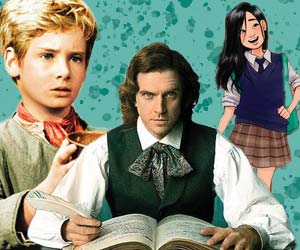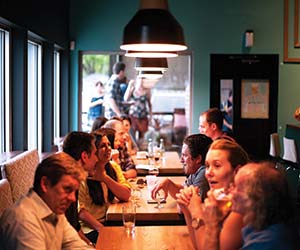A Tale of Two Cities
Select Format
Select Condition 
Book Overview
'It was the best of times, it was the worst of times...' Vividly interweaving epic historical drama with personal tragedy, Dickens's gripping novel depicts the lives of two very different men, Charles... This description may be from another edition of this product.
Format:Hardcover
ISBN:B00JI4RAIY
Release Date:January 1959
Publisher:Allyn and Bacon
Weight:1.01 lbs.
Customer Reviews
9 ratings
I received the wrong copy
Published by Bryn , 2 months ago
I ordered the penguin classic edition and technically I received one, but the cover looks completely different than what was advertised.
Very good??
Published by T Hall , 2 months ago
Ordered book in “very good condition” but notations had been made on every single page making it - in my opinion - unreadable. Things like that should be noted or ranked considerably lower.
Book condition
Published by A , 2 months ago
I ordered a book in “like new” condition but received a book with writing all throughout.
The must read again book!
Published by Brenda , 2 years ago
Read it in high school many years ago & just read again, & appreciated it much more as an adult. This has to be one of the crowning glories of Charles Dickens...."it was the best of times, it was the worst of times....." What a way to start a book! And the ending was just as poignant...."it is a far far better thing I do than I have ever done...on his way to the guillotine. How Dickens contrasts Paris & London, love & hatred, war & peace, requited & unrequited love...it is a masterpiece of historical fiction. It is the substitionary love that Christ took on for us, innocent yet willing to pay for our sin. Here, the unsavory, drunkard lawyer does the same, trading places with the woman he loves husband, knowing he will be killed. Its an amazingly wonderful tale weaving in fascinating characters into a horrible, bloody, atrocity of a war between France & England and the overtaking of the government and the aristocracy of Paris by the poor and dejected who turn out to be ruthless and barbaric.
Vengeance Versus Forgiveness
Published by Thriftbooks.com User , 6 years ago
It’s the ultimate mystery novel: characters act strangely, but always for a reason. Miscellaneous people drift in and out, but they’re not truly miscellaneous — you just have to wait to see how they’re connected. And like any good mystery, the payoff at the end is worth the time it takes to get there...and what a payoff! Dickens is a master of the type of narration that simultaneously moves forward and back in time. In other words, strategically placed revelations from the past inform the present and shape the future. The brilliant timing both of his hints and of the actual revelations is a bonus field of study.
Quite possibly, the best book ever.
Published by Thriftbooks.com User , 15 years ago
I cannot say enough about this story. This is truely a masterpiece from the familiar opening to the satisfying conclusion, a work of art. Beautiful. Sydney Carton is a cheracter that I will not soon forget. If you read nothing else, read this. YOU WILL NOT BE SORRY.
An awesome tale of the horrors of political revolution!
Published by Thriftbooks.com User , 16 years ago
What an interesting thought. If it was possible for Dickens to write something that was less Dickensian than the rest of his impressive body of work, "A Tale of Two Cities" would qualify as the least Dickensian of them all. An absorbing historical work, a sharply moving forward tempo, little if any comic relief and a minimum of florid prose (at least relative to his own characteristic standard of an abundance of unnecessary embellishment) make A Tale of Two Cities a tense, somber, compelling and moving piece of work that is the shortest, yet perhaps most well known, of his major novels. The characters, as one would expect from Dickens, are still ambitious, magnificently described creations - Charles Darnay, son of the Marquis Saint Evrémonde, who moves to England and disowns his heritage as part of the ruling French aristocracy; Darnay's look alike, Sydney Carton, a hard-drinking ambitionless lawyer who comes at last to the realization that his life has been wasted; Lucie Manette, the typical Victorian heroine, who lives and loves with a faint heart, teary eyes and heaving bosom; her father, Alexandre Manette, who barely survives a long imprisonment in the Bastille and recovers his health and his reason only in the nurturing environment of his family in England; Jarvis Lorry, the man of business, the Tellson's Bank representative in Paris and the steadfast family friend of the Manettes; Ernest and Thérèse Defarge, the maniacal, metaphorical representatives of France's working class who evolve (or might that be devolve) into the citizens and citizenesses of a post-revolutionary French Republic; and, of course, Jerry Cruncher, a close to the edge Londoner, who makes his dubious living as a "resurrectionist", that is, a procurer of recently deceased corpses for medical research. Covering the history of London and Paris during the period from 1775, just prior to the onset of the American Revolution, to the storming of the Bastille in 1789, the height of Robespierre's Terror, and the daily bloodshed of the close shaves of France's barber, Madame La Guillotine, A Tale of Two Cities dwells on a multiplicity of themes - romance; unrequited love; altruism; the terrors of revolution; the evils of class distinctions; the power of friendship; the terrifying ability of power to corrupt; and the amazing ability of a faith in God to comfort through troubled times. If you're already familiar with Dickens, but have yet to read "A Tale of Two Cities", run to the nearest library or bookstore, curl up by the fire and read it as soon as you can. If you have yet to try your first Dickens novel, this is a fine place to start. Compose yourself and relax. Be patient and take the time to discover Dickens' style of writing. With the possible exception of Wilkie Collins, I don't believe there's another author who could have got away with writing complex, enormously lengthy paragraphs that, upon hindsight, the reader will discover were but single sentences. Of a sudden,
A Tale of Two Cities paints a beautiful while dark story of the French Revolution
Published by Thriftbooks.com User , 18 years ago
A Tale of Two Cities paints a beautiful while dark story of the French Revolution and how it affects an English family. It is, by all standards, a classic. Yet, if you decide to read it and are younger than a high school senior, I suggest reading it with a good dictionary by your side. It is written in the English of over one-hundred years ago and so I would also recommend a version that includes notes on what certain phrases mean as well as a guide to the allusions used in the story. I am not recommending the abridged version, though. Reading it as it was written gives a much different experience that seems more genuine. The copy of the novel that I read was published by Pocket Books and includes explanatory notes and more which I found very helpful. As I read I saw examples where Dickens (the author), implied satirical messages and themes relevant to the time when the book was written. Then, the situation in England resembled pre-Revolution France. Also, 1848, was known as the "Year of Revolutions". He may have been trying to discourage revolution and encourage solutions through political change, not violence. Dickens also implied, through his words, that a revolution could happen anywhere, even in England. He encouraged his message frequently but it never got old and wasn't monotonous. By using a variety of different situations, Dickens kept his message in the reader's mind. For example, at a burial of a spy in England, a mob forms and turns the burial into show of irreverent mourning and violence. He is implying that under the right conditions any group of people can turn into a violent mob. He also writes that history will repeat itself under the same circumstances. This message would have been very pertinent at the time. These messages about the state and flaws of society were frequent but were well integrated into the story. Many were fun to read due to Dickens' good use of satire and humor. One complaint that many historians, literary critics, and others have had about A Tale of Two Cities is that the characters and depiction of the social classes are too unrealistic. I, too, thought that some of the characters were somewhat unrealistic, yet I don't believe that Dickens made them that way without reason. One example is in a moment with a member the French aristocracy. While riding at breakneck speed through downtown Paris, this noble's carriage hits and kills a child. In response, he turns to the grieving father and coolly tosses him a gold piece and drives off. I saw this action as very unrealistic, but this isn't supposed to be literal. This noble's action is part of his characterization that is just supposed to show that he is very cold. It is also supposed to symbolize the oppression of the peasants by the aristocracy. The lower class had been oppressed for so long and Dickens sums up their oppression through this one noble's action. Still, some of the characters' actions are unrealistic. After a condemne
A Tale of Two Cities, Beyond the surface
Published by Thriftbooks.com User , 18 years ago
In Charles Dickens' novel, A Tale of Two Cities, he makes it clear as to what his views are of the revolution with his ample descriptions of the crowds of revolutionaries, but what readers may fail to see is how he incorporates the revolution into each of his characters. True, some of the crowd's actions were savage and brutal, but given the period, I would say that Dickens gives a rather balanced and insightful perspective from both sides of the revolution. The first and most notable being that of the disgruntled citizen willing to participate in a governmental reform, and the other the pompous rich upper class, or the aristocrats, who wish to keep their corrupt form of politics. In this novel Charles Dickens shows his audience that everything has a purpose and whether they have come to a realization of that purpose or not, they are willing to sacrifice their lives for that purpose. Dickens' use of arguments on both sides of the revolution are acted upon two chief characters, the first and foremost being the mobs of revolutionaries, who dedicate themselves and bleed for their idea that their blinded by the rashness of their actions. These people are also so fickle in their loyalty that they will turn on anyone who opposes their ideas. When the revolutionaries gain power in Book the Third, there now exists such violence and madness displayed by them, that I see them more as beasts then people. Dickens says, "False eyebrows an false moustaches were stuck upon them, and their hideous countenances were all bloody and sweaty, and all awry with howling, and all staring and glaring with beastly excitement and want of sleep."(3.259) This quote symbolizing two aspects in my opinion, the amount of bloodshed they are willing to sacrifice for their ideals and their madness in accomplishing their task. The second being that character of Charles Darnay, a man so doomed by his family's actions that his innocence represents that which may have lain underneath the foul aristocracy. Darnay renounces his family status and wealth just so he can prove that he was no friend of the old government. Nevertheless, through the crowd's rashness Darnay ends up getting the short side of the stick, being arrested twice and be doomed to the guillotine. Darnay may also represent the hopelessness of any uncorrupted soul of the former government, and Dickens portrays him well enough to get his point across. Dickens uses a character's sacrifice to explain that everything has a purpose in life. When Dr. Manette is "recalled to life"(1. 8), he is given a new purpose to live by Dickens, the purpose to fight for both his sanity and to help Darnay. Manette's character is an intelligent one, encompassing the aspects of a citizen who doesn't much care for the way things are done, but when it comes to his family, he will fight until every breath in his body is gone. Sydney Carton is a dynamic character in this novel because he recognizes his purpose and acts on this recognization to sa
A Tale of Two Cities Mentions in Our Blog

The Multiverse of Great Expectations: ‘Please, sir, I want some more.’
Published by Ashly Moore Sheldon • September 01, 2022
We’ve been having fun exploring the "Multiverse" of selected classics, by curating a collection of inventive adaptations. So far, we’ve featured installments on Alice in Wonderland, the Brontës, The Wizard of Oz, and Pride and Prejudice. Here we offer a collection of ten imaginative takes on Charles Dickens.

30 Facts About Books for National Trivia Day
Published by Bianca Smith • January 04, 2018
All you need to make you look smart (not that you’re not already)





